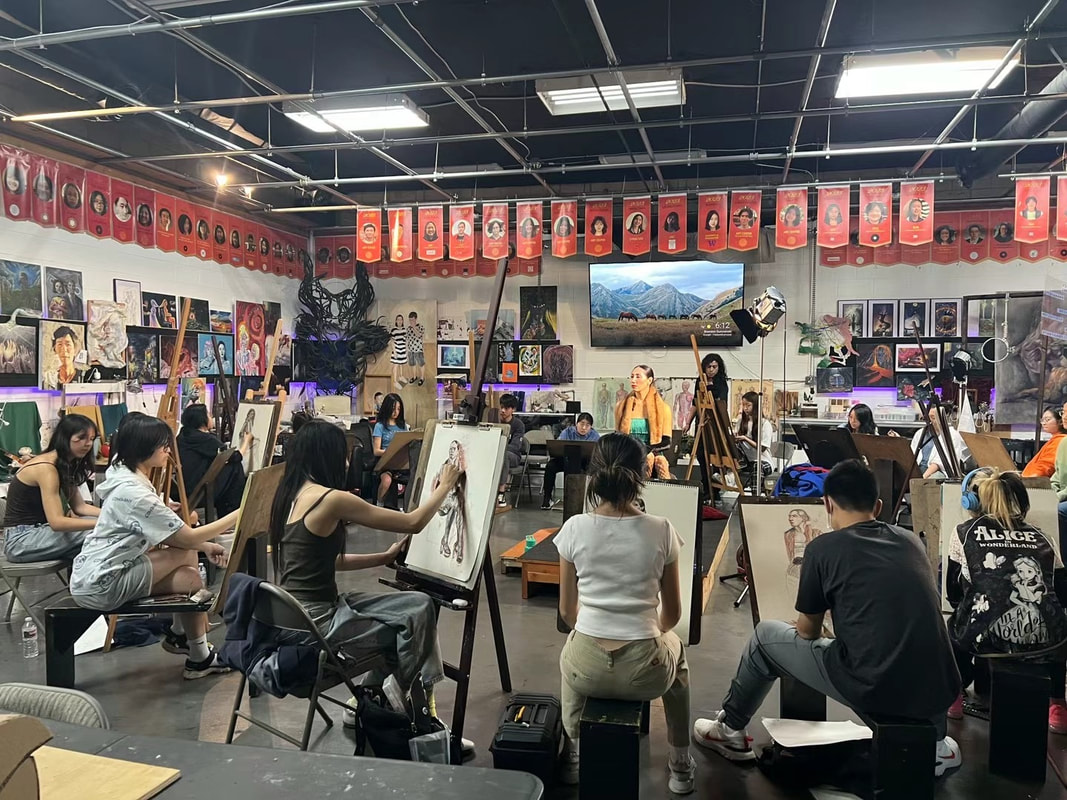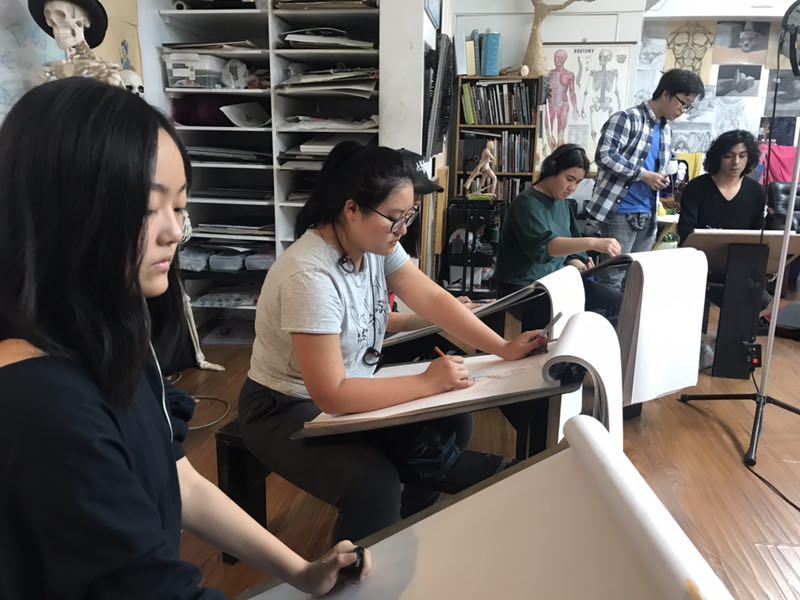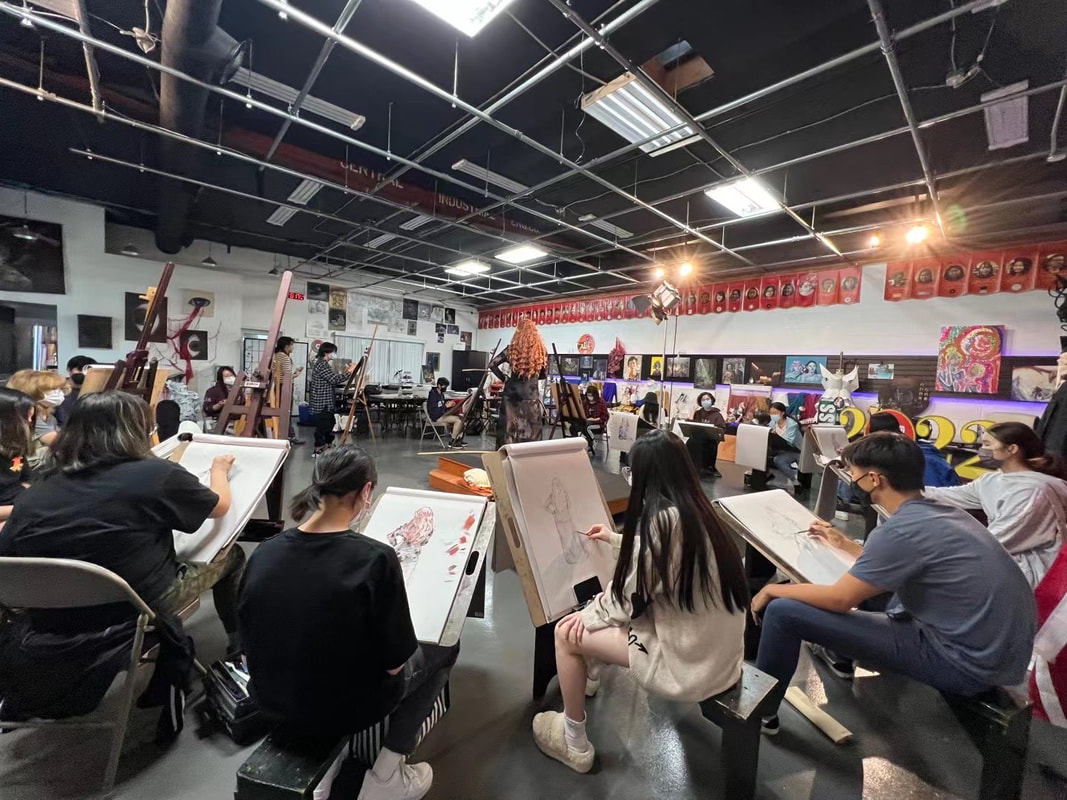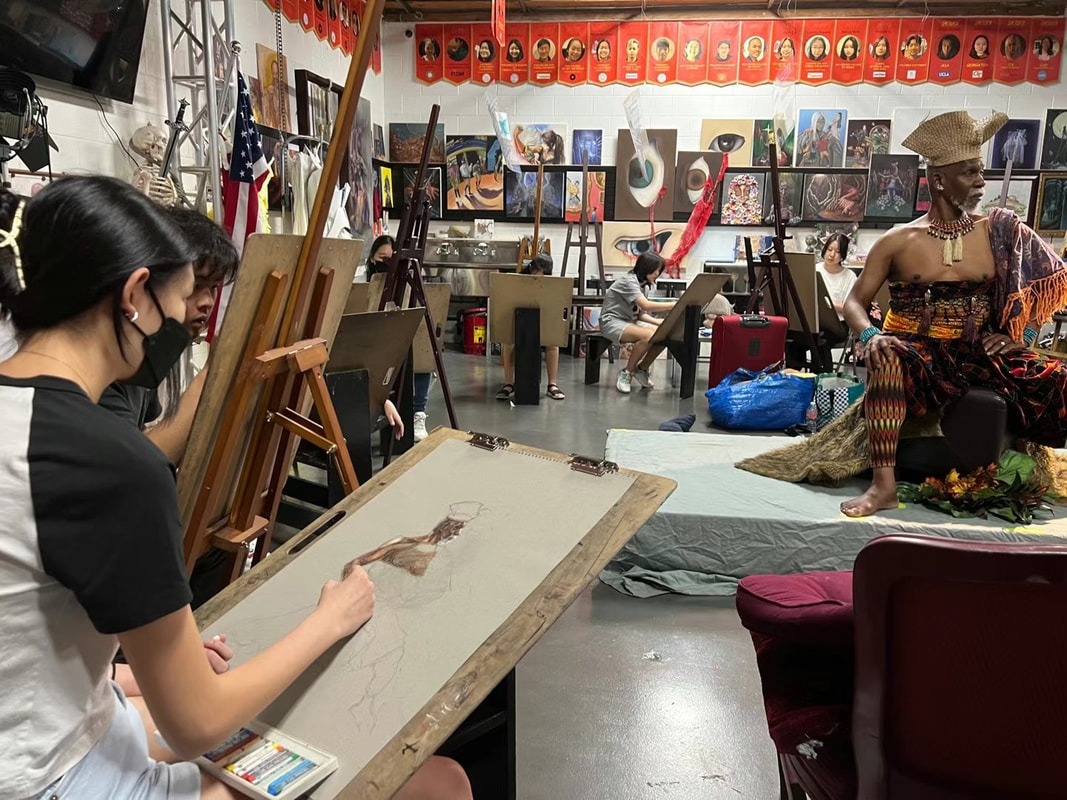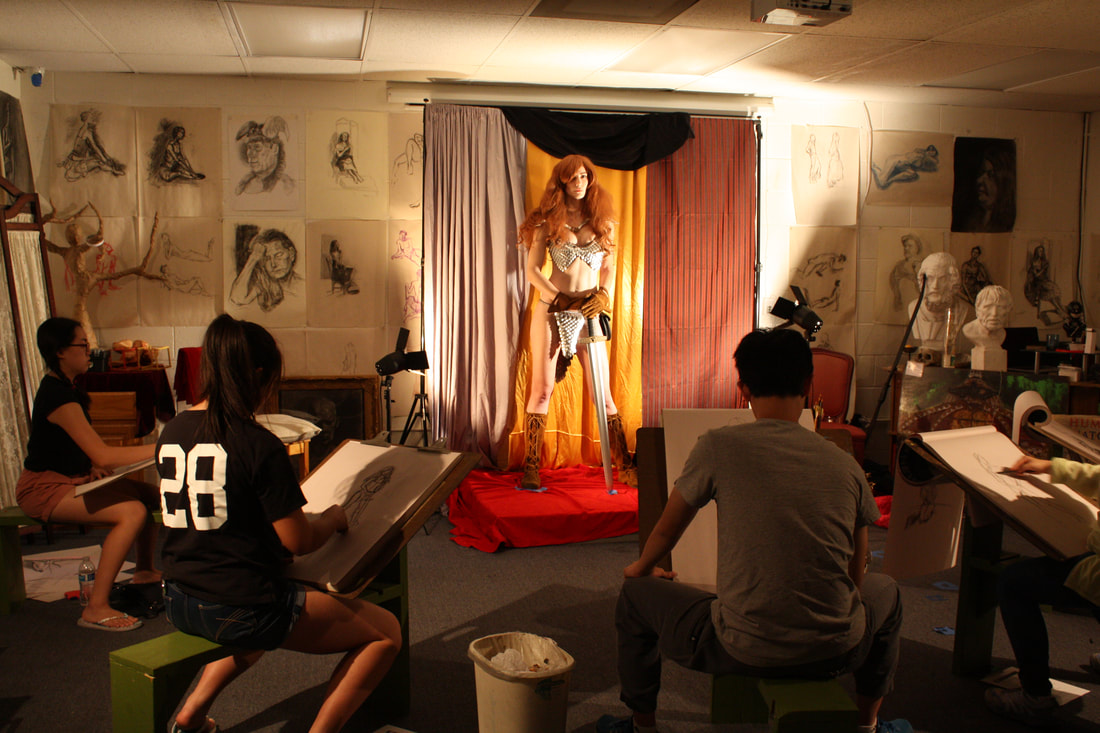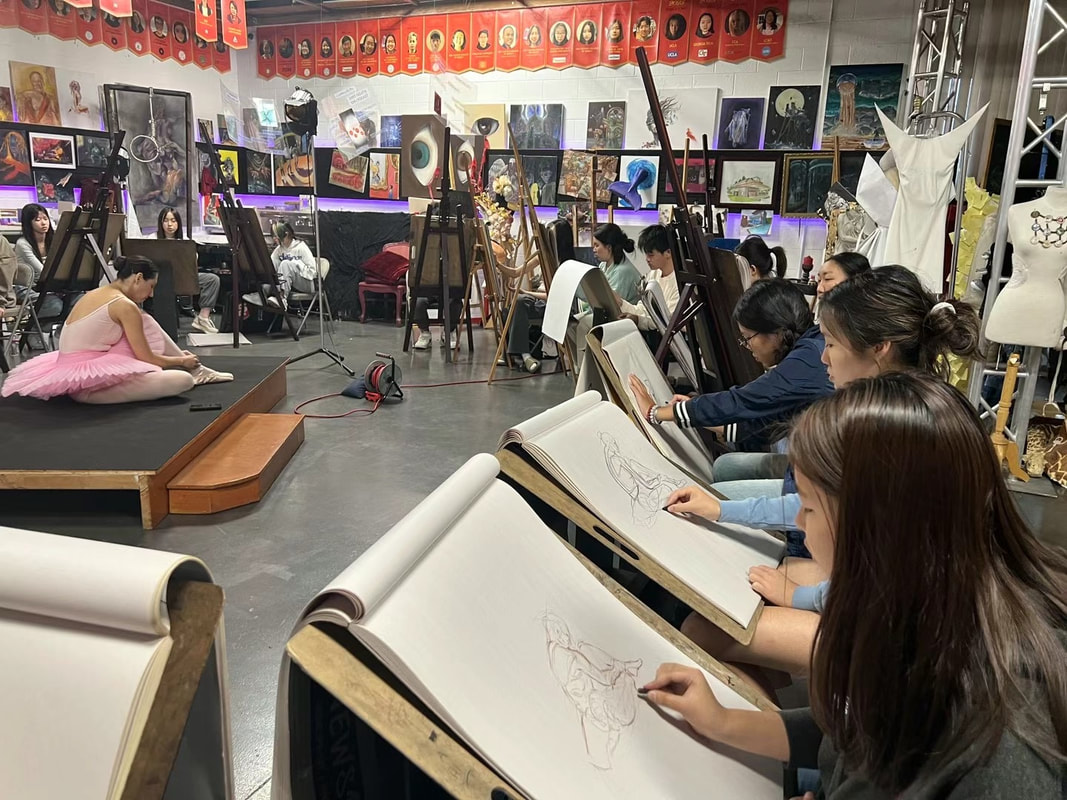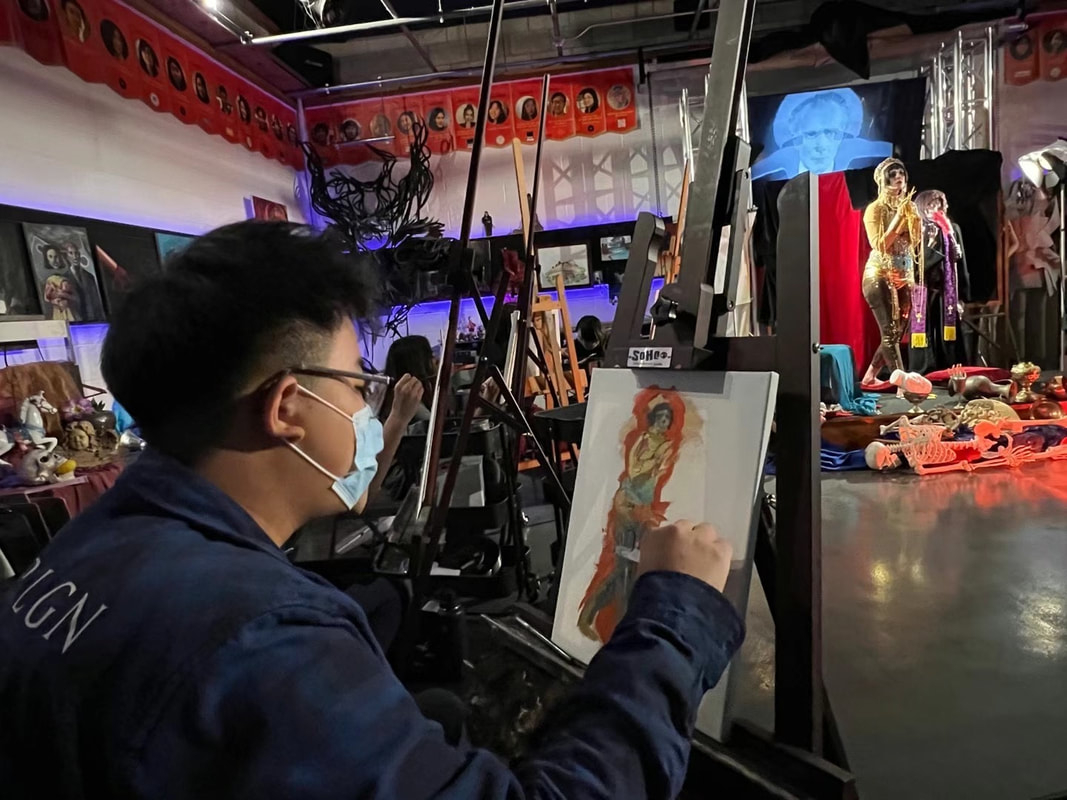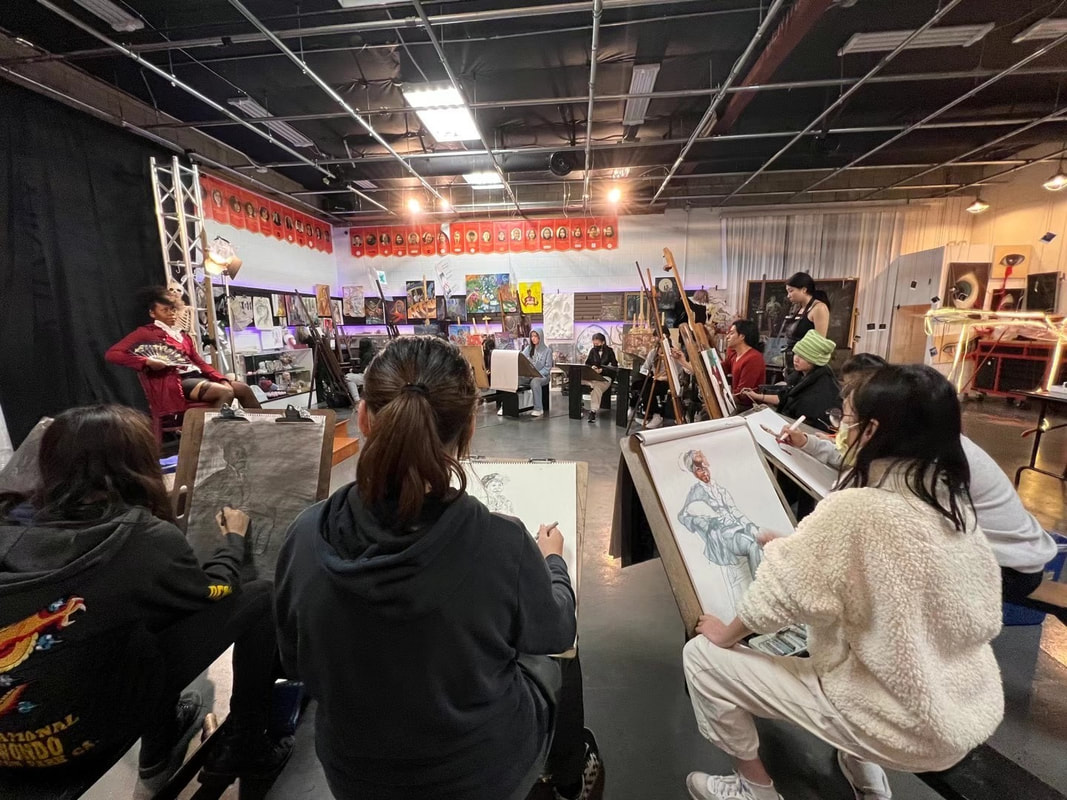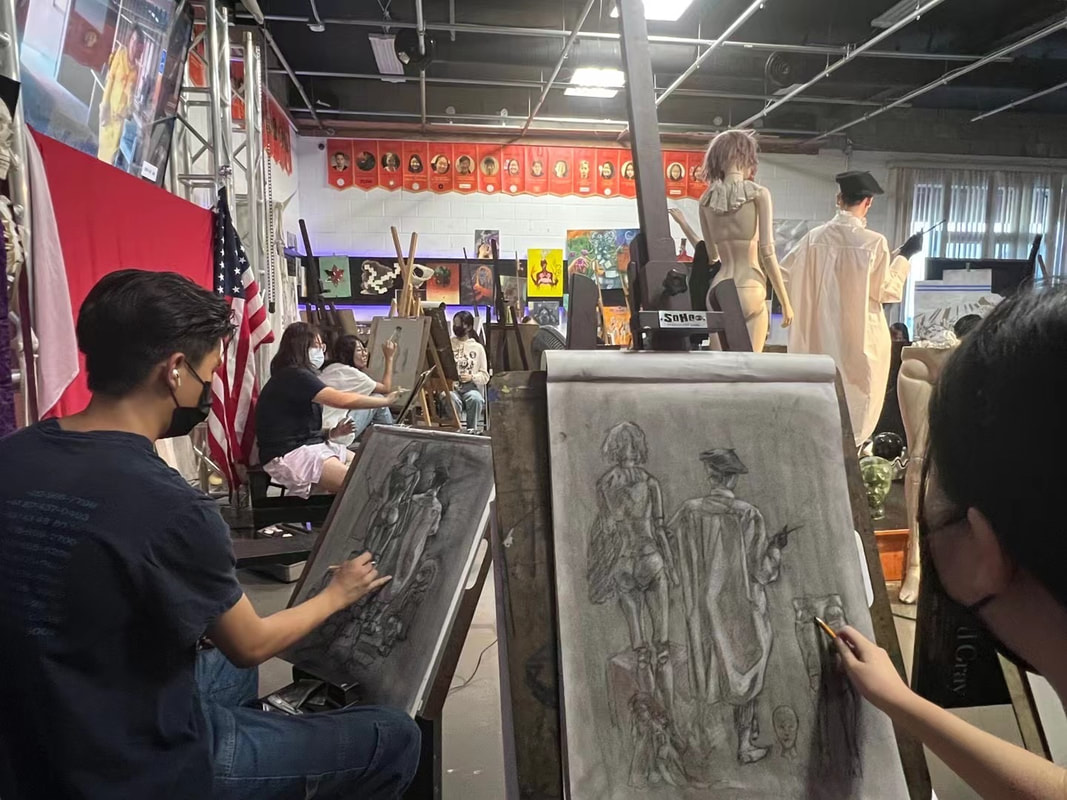|
The reason to take a life drawing class is to improve your ability to draw not just people, but overall. Many US colleges consider life drawings from a model /observational, among the first and most important components in students’ portfolios. In this picture taken in 2019 about WCAAD life drawing class, all of the four students were admitted to their dream colleges with different majors: Jimmy Liu,2020-Art Center-Product Design-scholarship $42,000; Qiuya Chen, 2021-USC-Game Design; Dorothy Wei,2021-Ringling College of Art and Design-Entertainment Design-scholarship $48,000; Jessica Fung-2021-UC San Diego-UI Design (she also received RISD/Parsons/Otis/MICA offers with scholarship totaling $500,000). At West California Academy of Art and Design students will have instructed life drawing classes including anatomy, working with various material, and techniques on a weekly basis. Don’t waste time, the sooner you take this course the sooner you will see results in your work! Students will be better equipped to handle various timely poses to help in their own artistic practice. Poses vary from gestures to long pose. Models vary male female and are nude, costumed and themed based on lesson. Even if you are going to a field like animation or architecture, life drawing is still a key component in filling your art portfolio. Many US colleges consider life drawings among the first and most important components in students’ portfolios. The reason why, is that, essentially, they see how well you understand: forms, proportions, perspective, shading, weight, balance, tension, perceptive, and all the fundamentals. Ashley McGinn—2023 Art Center College of Design--Animation Tinon Chan— 2023 Syracuse University--Architecture Simon Song—2023 Art Center College of Design --Entertainment Design Melissa Guo-2023 School of Visual Arts-Illustration Why is Life Drawing important? Life drawing is a useful device to sharpen skills and understand forms. Your cartoon drawings will get better, drawings from imagination will improve, your designs and relation to spatial analysis will get better, your landscape paintings will improve, and so on. These skills are important to translate back onto the field of study chosen. Students will alternate gesture drawings with long methodical studies in and out of class, further in their own art works for preparation of their portfolio. The aim is to enable the student to draw spontaneously, energetically and accurately, experiment and show case their ability to observe, model and stylize their figure drawings through a variety of mediums. Industry studios want to see traditional, classical figure drawing from life. They just don’t want to see caricatures, cartoons, or copies of the studio’s characters. Disney and other studios have professional artist continue studying from a live model. Disney even pays their animators to attend these classes to develop and have the best skilled Artists. In the WCAAD life drawing class, students will learn from a live model and include learning from mix media. To explore various techniques. To see immediate results, and, compare those results with a peer group and/or instructor. Not to mention, to create finished artworks. Students will draw the figure so that the illusion of volume is achieved through a variety of shading techniques, such as, graduated continuous tones, cross contour lines, and cross hatching. Students will depict the figure in a variety of poses using foreshortening (linear perspective); convey gesture, the illusion of expressive movement, when drawing the figure spontaneously in very brief periods of time. Students will simplify, exaggerate, or distort visual elements and normative proportions to interpret expressive qualities of the figure; evoke mood through the expressive use of drawing materials; present their completed work in a professional manner. Instructional Methodology Teaching will be done by the following methods: Demonstration – The instructor will demonstrate concepts and technique by drawing/painting in front of the class. Hands on teaching – The instructor will make the rounds, working with each student, giving constructive criticism, and doing individual demonstrations. Discussion – The instructor will illustrate the technical and expressive aspects of life drawing by showing examples of his own work, and the work of other artists. Students will be encouraged to participate in group discussions and critiques as time allows. Individual Discussion – The instructor will guide students individually by giving technical advice and suggested reading and research which would benefit individual students. To alternate a gestalt, gestural approach to life drawing with a methodical approach, this is to, insure that the student will draw with energy and accuracy. (By Omar Gallegos, WCAAD Vice Principal and Director of Education)
0 Comments
Leave a Reply. |
Archives
July 2024
|
Campus420 S Pine St, San Gabriel, CA 91776
|
Office HoursMon-Fri: 11:00 AM - 7:00 PM
Sat-Sun: 8:30 AM - 7:00 PM Summer Schedule Mon-Sun: 8:00 AM-7:00 PM |
Copyright © 2024 MyArtEducation.com
West California Academy of Art and Design. All Rights Reserved.
West California Academy of Art and Design. All Rights Reserved.
